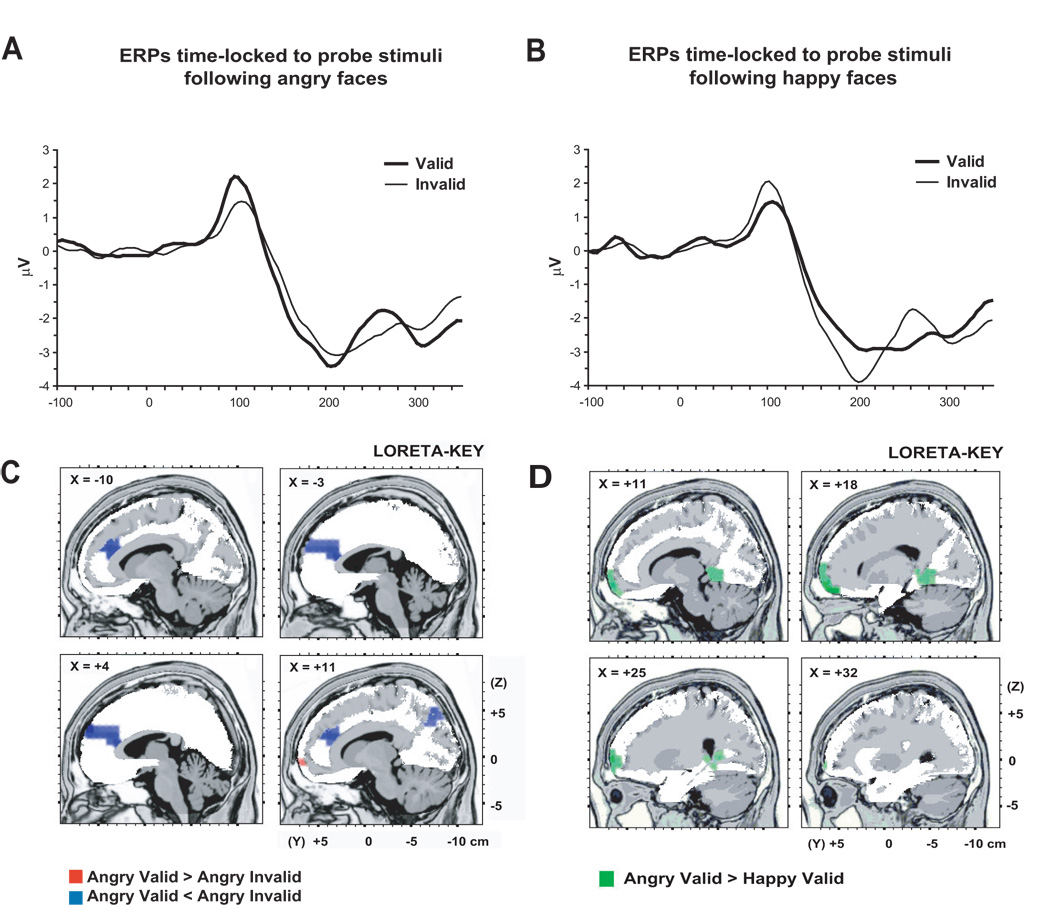Figure 5.

(A) ERPs time-locked to the probes: Grand average ERP waverforms for the P1 to valid (light line) and invalid (heavy line) probes following angry faces (p = .042) presented in the LVF at channel 92 (right posterior electrode). (B) Results of voxel-by-voxel paired t-tests contrasting current density for the P1 elicited by valid versus invalidly cued probes following an angry face presentation. Red: angry valid > angry invalid. Blue: angry valid < angry invalid. (C) ERPs time-locked to the probes: Grand average ERP waverforms for the P1 to valid (light line) and invalid (heavy line) probes following happy faces (p = .038) presented in the RVF at channel 92 (right posterior electrode). (D) Results of voxel-by-voxel paired t-tests contrasting current density for the P1 elicited by valid cued probes following angry face versus happy face presentation. Green: angry > happy. In panel (B) and (D), statistical maps are thresholded at p < 0.01 and displayed on the MNI template.
